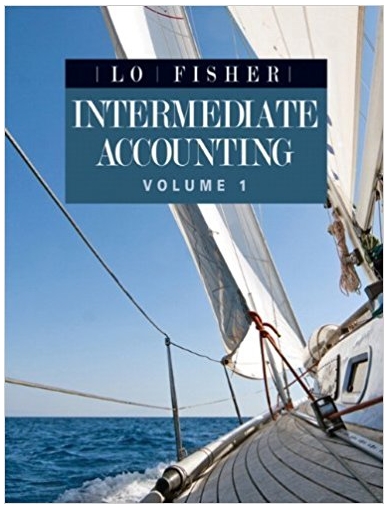


Question: Write your commentary regarding the article starting the pros and cons of having a gold standard for the economy.
5. We wouldn't have these ination problems if the value of the Philippine peso remained stable. That's why many free market economists advocate constructing a new gold standardsetting the value of the peso based on a xed quantity of gold, or at least having it fall within a range of, say, P62,000 to P68,000 ($1,150 to $1,250) an ounce at current market prices. Anchoring the peso to gold would restore stability to the market. It would sharply reduce the role of government and politics in determining the value of the currency. Today, for example, a country seeking to fund massive social and infrastructure spending will often do so by printing more money. What happens? The added money in circulation ends up lowering the value of its currency. Gold is exceptionally well suited to anchoring currency values because its intrinsic value is constant. All the gold that has been mined is still in existence: gold cannot be destroyed. Even a major nd wouldn't be large enough to dramatically alter prices. Thus, you don't get supply shocks and the kind of upheaval that, say, a typhoon might have on the price of rice.In a report for the Cato Institute, University of Missouri economic historian Lawrence White wrote that while gold is not perfect, studies have shown it to be the best way to create an orderly global market.\"A gold standard does not guarantee perfect steadiness in the best way to create an orderly global market.\"A gold standard does not guarantee perfect steadiness in the growth of the money supply, but historical comparison shows that it has provided more moderate and steadier money growth in practice than the present day alternative, politically empowering a central banking committee to determine growth in the stock of at money. \"Fiat currency encourages ination because governments can capriciously print more money. The opposite is true of gold: in the years that the US maintained a classical gold standardfrom 1880 to l9l4ination was virtually zero.In the old days, Washington was obligated to convert to gold the dollars that were presented to it. This became a problem in the mid-19605 to early 19703, when the Federal Reserve (the US central bank), attempting to lubricate economic growth, printed too many greenbacks. It became impossible to maintain the dollar's value at $35 an ounce.The US abandoned the gold standard, as Lawrence White had observed, not because of any aw in the system, but because of politics. Former President Richard Nixon was under pressure to do something about America's balance of payments and trade decits.For the gold standard to work today, the government has to keep the value of the peso pegged to gold at a valueas previously mentionedof P62,000 to P68,000 per ounce. In today's modern markets, the government doesn't need piles of gold to maintain a gold standard. Nor does the government need to promise to exchange gold at a xed rate for pesos. All the central bank has to do is look at the market price of gold: if it moves outside a certain narrow range, the monetary authority should react by either tightening or loosening the money supplyToday, many economists ridicule the gold standard as \"crazy.\" However, for centuries, gold was the touchstone of money. From the days of American founding father, Alexander Hamilton, until the 19605 (except briey in 1933-34), it was an article of faith that, barring a major war, the dollar should be xed to gold in order to remain strong and stable.The biggest objection to gold is that the xed nature of the system restrains economic growth. But this thinking is based on the illusion that a central bank can create prosperity by printing more money. Another objection is that a major discovery could increase the objection is that a major discovery could increase the outstanding supply, which will cause ination. But experience demonstrates that even major nds such as the 1849 California gold rush or the mammoth amounts of gold that Spain took out of Latin America led only to a mild increase in prices, and then not for very long, The disruptions of such discoveries are minimal compared to the damage politicians routinely wreak when a currency isn't anchored to gold.An additional argument against gold is that it caused the Great Depression of the 1930s. This is also a myth. The Great Depression was the product of bad policyexcessive tariffs. Gold was the victim of the resulting global trade wars. Amidst an atmosphere of heightened economic and political uncertainty, people around the world exchanged their currencies for gold. With government supplies under pressure, nations led by Great Britain broke the link to gold. Its central role was restored at the end of World War II with the creation of the gold- based Bretton Woods international monetary system. Ricth Nixon blew up the system in 1971 because of concern over the America's increasing trade imbalance (he and his advisers mistakenly thought an imbalance hurt the economy) and his declining poll numbers. So he succumbed to the temptation to try to \"x\" the situation by devaluing the dollar. His unilateral abandonment of Bretton Woods and imposition of 90day wage and price controls were the \"Nixon shocks.\" They left the US and the world economy reeling and set the stage for the stagation of the 1970s. Sadly, succeeding administrations did not learn from 1970s. Sadly, succeeding administrations did not learn from this lesson. America and the world paid the price in 2008. The lesson: Predictability and stability are necessary conditions for business investment in all markets. Stabilizing the peso's value through a tie with gold is the best way to create a stable foundation in currency markets and the economy.eric.jurado@gmail.com













